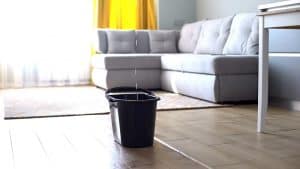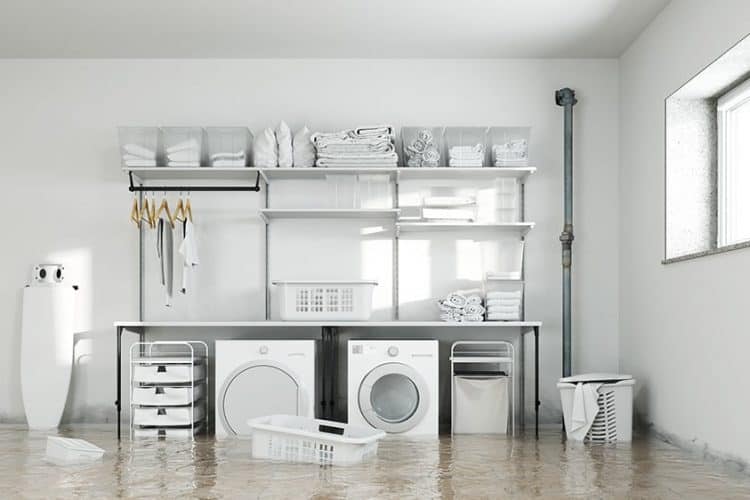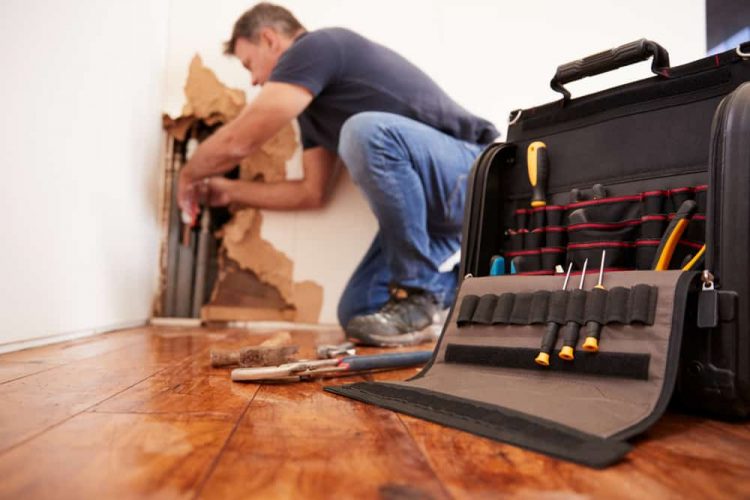
Water damage can have long-lasting and devastating consequences. It silently wreaks havoc in homes until it is discovered, causing extensive damage that necessitates urgent property restoration. Once water damage strikes, a prompt and efficient response is crucial to minimize the total damage it can cause and help prevent further deterioration of the property.
Here at 1-800 WATER DAMAGE, we’ve witnessed the stress that water damage events cause and the immense relief that our professional experience and compassion can bring to affected homeowners once we arrive on the scene. The quicker the water is removed and the property is dried, the less damage that is incurred, significantly reducing property restoration costs and stress for homeowners.
According to the Federal Emergency Management Agency (FEMA), mold can start growing within 24-48 hours if the damage isn’t addressed promptly.
To arm you with the knowledge needed to prevent or minimize the worst effects of water damage events, this blog post will detail the seven most common causes of water damage in homes. We’ll also provide valuable prevention tips along the way.
Leaking Pipes
Unexpected pressure changes, wear and tear, or sudden temperature drops can all cause pipes to leak or burst, often necessitating extensive property restoration.
Prevention Tips: Regular inspections can help spot early signs of deterioration. A sudden surge in your water bill might indicate a hidden leak. Don’t hesitate to enlist professional help for those hard-to-reach areas.
Damaged Appliances
As appliances age, their pipes can rust, and hoses can weaken. Washing machines, dishwashers, water heaters, and refrigerators can all contribute to damage caused by an unexpected leak or burst pipe.
Prevention Tips: Regularly check these appliances, replacing any worn-out parts as needed. A leak detection system that shuts off the water supply when a leak is detected can prevent substantial damage.
Clogged Drains
A clogged drain can quickly evolve from a minor inconvenience to a serious problem. Overflows, whether from a blocked sink or toilet, can not only lead to a mess, but also considerable damage if they are not mitigated right away. This water can seep into your floors, walls, and cabinets, creating the ideal environment for mold growth and potentially resulting in permanent structural damage if it goes unnoticed or is not properly dried out..
Prevention Tips: To avoid damage caused by a clogged drain, routine maintenance is essential. Regular use of drain cleaners can help keep your pipes clear. Additionally, scheduling professional drain cleaning services can provide a more thorough cleanout and identify potential issues before they escalate.
Faulty HVAC Systems
HVAC systems, often overlooked unless they stop working, are a surprisingly common culprit when it comes to water damage. When an HVAC system is not cleaned or maintained, condensation can build up and leak, damaging your property. This is because, during the cooling process, HVAC units generate a considerable amount of condensation that needs to drain away correctly. If the drain line gets blocked or damaged, water can back up and overflow from areas it’s not supposed to, causing damage to your system and your home.
Prevention Tips: To prevent these issues, schedule regular HVAC checks and ensure the drain lines are clear of any blockage.
Roof Damage
A damaged roof is an open invitation for water, especially during periods of heavy rain or snow. A compromised roofing structure can allow moisture to infiltrate, causing damage to your ceilings, walls, and insulation. Over time, this consistent water exposure can lead to structural damage, mold growth, and compounding structural issues.
Prevention Tips: Regularly inspect your roof and gutters, looking out for missing or loose shingles, signs of wear, or other damage.
NOTE: There are several ways you can inspect your roof without climbing on top of it! If you are concerned about a particular area that would require climbing onto your roof, or if you want to do a more thorough roof inspection, you should always contact a qualified roofing contractor.
Sewage Backups
Sewage backups present a serious and hazardous issue for homeowners. Aside from the nightmare of a mess they can cause, sewage backups also pose health risks due to the bacteria and pathogens present in wastewater. Sewage backups are considered a “category 3” water loss due to the contaminants and potential illness or harm they can cause upon exposure. So, in addition to the property restoration steps required with “cleaner” causes of water damage, there are extra precautions and remediation measures required in the cleanup process for sewage backups to ensure the impacted area is handled properly.
Severe Weather and Natural Disasters
Severe weather and natural disasters are one of the common causes of water damage, and while you can’t prevent natural disasters, you can try to be prepared for them.
Prevention Tips: Install flood sensors if you live in a flood-prone area, and regularly check your flood prevention measures to ensure they are working correctly. If you have a basement that tends to gather water during storms, consider investing in a sump pump or other drain system, and keep things raised off the floor. It is also recommended to keep gutters and outdoor drains clear.
Despite our best efforts to prevent water damage from impacting our homes, sometimes, it’s just inevitable. Plumbing can fail, appliances can leak, and severe weather can strike – these are all factors often out of our control. Unfortunately, no matter where you live or what you do, there’s always a risk of water damage. This is particularly true in regions prone to heavy rainfall or flooding or in older homes with aging infrastructure. In these instances, you should hope for the best but prepare for the worst.
Preparing for the potential of the unexpected means having a plan in place. This includes knowing how to shut off your home’s water supply in the event of a burst pipe or severe leak, having the contact information of a reliable property restoration company like 1-800 WATER DAMAGE handy, and maintaining an up-to-date home inventory for insurance purposes.
Ultimately, the key to successfully navigating water-involved damage lies in rapid response and efficient restoration–this will minimize the overall impact of the loss, helping to restore both your home and your peace of mind as soon as possible.
Once again, the seven most common causes of water damage in homes are:
- Leaking Pipes
- Damaged Appliances
- Clogged Drains
- Faulty HVAC Systems
- Roof Damage
- Sewage Backups
- Natural Disasters
Remember, water damage is progressive—the longer it’s left untreated, the more damage it causes. If you spot signs of any of the circumstances described above, act immediately and call the experts at 1-800 WATER DAMAGE.
Our team can help you navigate the process of property restoration, providing technical support and compassion during such stressful times.
If you find yourself in need of any of our services, please reach out, or give us a call at (800) 928-3732, and we will get started right away.



